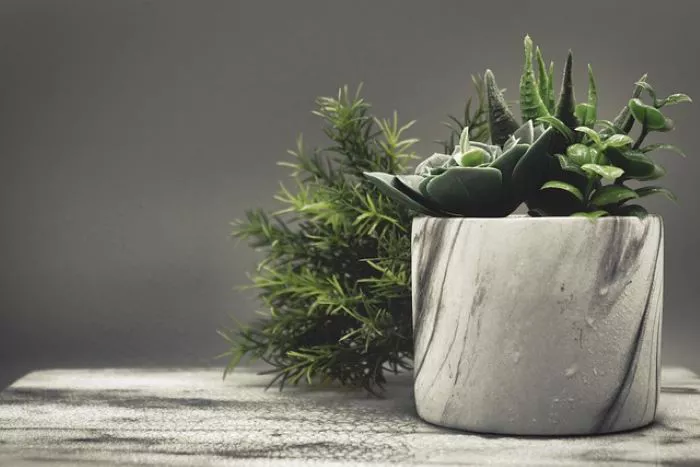Succulents are beloved for their unique beauty and resilience. However, they can be vulnerable to various pests that can harm their health and appearance. Preventing pests is essential for maintaining the vitality of your succulent plants. This article provides a professional guide on how to prevent pests on succulents. It will cover common pests, prevention strategies, and effective treatment methods.
Understanding Common Pests
Before implementing prevention strategies, it is important to identify the common pests that affect succulents. Some of the most frequent pests include:
Mealybugs: These small, white, cotton-like pests often cluster in leaf axils and on stems. They feed on plant sap and can cause wilting and yellowing of leaves.
Aphids: Small, green, or black insects that suck sap from succulent leaves. They can reproduce quickly and cause damage to new growth.
Spider Mites: Tiny, spider-like pests that thrive in dry conditions. They create fine webbing on plants and can cause leaf discoloration and drop.
Scale Insects: These pests appear as small, brown or white bumps on stems and leaves. They also feed on sap and can weaken the plant.
Fungus Gnats: Small flies that thrive in moist soil. The larvae feed on roots and can hinder plant growth.
Creating a Healthy Environment
One of the most effective ways to prevent pests is to create a healthy environment for your succulents. Healthy plants are less susceptible to infestations. Here are some strategies to ensure your succulents thrive:
Proper Watering: Overwatering is a common mistake that can lead to root rot and attract pests. Allow the soil to dry out completely between waterings. This practice not only promotes healthy root development but also discourages pests that thrive in moist environments.
Well-Draining Soil: Use a well-draining soil mix specifically designed for succulents. A good mix typically contains sand, perlite, and potting soil. This helps prevent excess moisture, which can attract pests.
Adequate Light: Ensure that your succulents receive enough light. Most succulents prefer bright, indirect sunlight. Insufficient light can weaken plants and make them more susceptible to pests.
Air Circulation: Good air circulation is crucial for preventing pests. Avoid overcrowding your plants and ensure they have enough space to breathe. This reduces humidity levels and minimizes the risk of pest infestations.
Regular Monitoring and Inspection
Regularly inspecting your succulents is essential for early detection of pests. Here are some tips for effective monitoring:
Visual Checks: Examine your plants frequently for signs of pests. Look under leaves and in leaf axils where pests often hide. Early detection allows for quicker intervention.
Check for Damage: Look for signs of damage such as discolored leaves, webbing, or sticky residue. These indicators can help you identify pest problems before they escalate.
Isolate New Plants: When introducing new succulents to your collection, keep them isolated for a few weeks. This practice helps prevent any potential pests from spreading to your other plants.
Natural Prevention Methods
Utilizing natural methods can be an effective way to prevent pests without relying on harsh chemicals. Here are some strategies to consider:
Neem Oil: Neem oil is a natural pesticide that can deter various pests. Mix neem oil with water according to the instructions and spray it on your succulents. This oil disrupts the life cycle of pests and can help prevent infestations.
Insecticidal Soap: Insecticidal soap is another effective option for controlling pests. It suffocates insects on contact. Spray the solution on affected areas of the plant, ensuring thorough coverage.
Diatomaceous Earth: This natural powder is made from fossilized algae and can deter soft-bodied pests. Sprinkle a thin layer of diatomaceous earth on the soil surface and around the base of the plants. It acts as a barrier and can help control pests.
Companion Planting: Consider planting companion plants that naturally repel pests. For instance, marigolds can deter aphids and other harmful insects. Planting these alongside your succulents can provide additional protection.
Chemical Control Options
If natural methods do not effectively control a pest problem, chemical treatments may be necessary. However, it is crucial to use these products carefully to avoid harming your succulents. Here are some options:
Systemic Insecticides: These products are absorbed by the plant and can control pests from the inside out. Follow the manufacturer’s instructions carefully to ensure safe application.
Contact Insecticides: These sprays kill pests on contact. Ensure that you apply them in the early morning or late afternoon to avoid harming beneficial insects and to reduce the risk of burning your plants.
Always Read Labels: When using any chemical treatment, carefully read the label and follow the instructions. Ensure that the product is safe for use on succulents.
Maintaining Good Hygiene
Maintaining cleanliness around your plants is essential for preventing pests. Here are some hygiene tips:
Remove Dead Leaves: Regularly remove any dead or decaying leaves from the soil surface. These can attract pests and create a breeding ground for insects.
Clean Containers: Ensure that pots and containers are clean before planting. Disinfect used pots with a solution of water and bleach to eliminate any lingering pests or diseases.
Keep the Growing Area Clean: Regularly clean the area where your succulents are located. Dust and debris can harbor pests, so maintaining a tidy environment is crucial.
Conclusion
Preventing pests on succulents requires a combination of healthy practices, regular monitoring, and appropriate treatments. By creating a suitable environment, inspecting plants regularly, and utilizing natural or chemical controls when necessary, you can protect your succulents from harmful pests. Remember that healthy plants are less susceptible to infestations. With proper care and attention, your succulent collection can thrive and remain pest-free. Enjoy the beauty of your succulents and the satisfaction of successful gardening.


